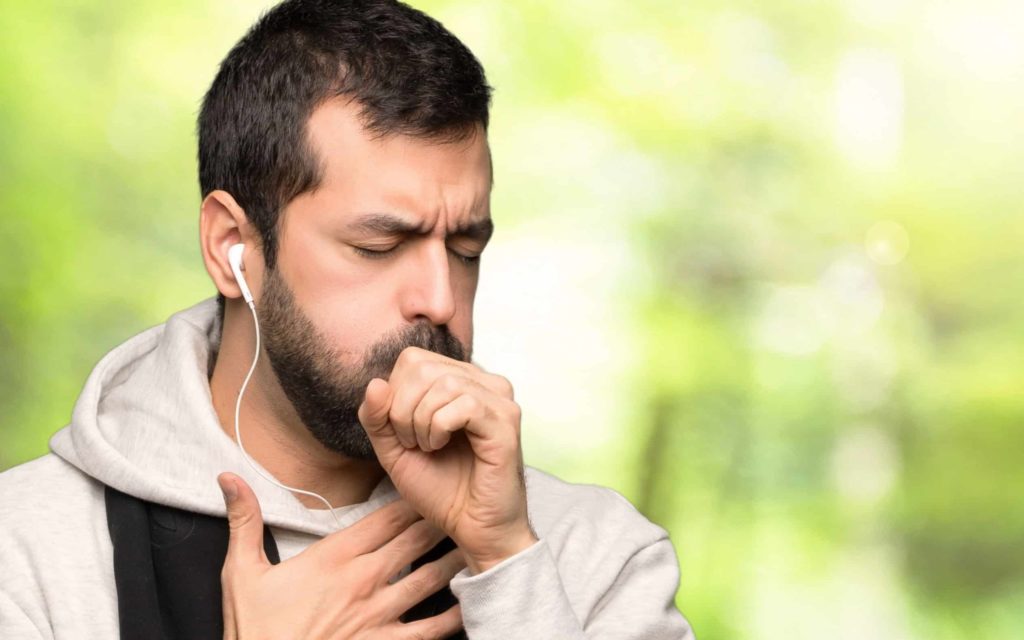Asthma is a disease of the airways and lungs. Asthma symptoms are coughing, shortness of breath, chest tightness, and wheezing. Symptoms can be worse during the night or with exercise. Asthma can be caused by genetic or environmental factors. Air pollution and allergens are environmental factors. Treatments can help you control asthma so you can live a normal life. Avoiding the triggers like allergens and respiratory irritants helps you prevent asthma episodes.
Since every asthma is different, your doctor can help you classify your asthma, ranging from mild to severe. The doctor will perform tests such as respiratory infection or chronic obstructive pulmonary disease also known as COPD. Depending on the classification, your doctor will select the best treatment. Asthma severity can change over time so treatment may require some adjustments. The treatment includes inhalers, nebulizers, long-term medicine, and quick-relief medicine.
Would you like to know more? Read below the article by Prof. Dr. med. Johannes Wildhaber & Dr. med. Andreas Jung.
ASTHMA: WHAT IS IT?
Bronchial asthma is the most common chronic disease of childhood and it is also very present in adulthood. In children, the symptoms of chronic asthma are sometimes unspecific. In addition, it is often difficult, especially in young children, to measure lung function at rest or in draw conclusions, because the classic signs of reversible bronchoconstriction are sometimes absent. As a result, asthma the child is sometimes not diagnosed and often insufficiently treated. It is essential to diagnose asthma early and precisely because it affects no only everyday life, but also the prognosis of this disease pulmonary.
The severity of asthma in adulthood also often depends on the severity of this affection during childhood. Of more, recent studies show that lung function in adulthood is largely determined by the severity of this deficiency in childhood. The treatment of bronchial asthma is not only based on medication but also holistic therapy, with the treatment of allergic triggers, patient information, and training, as well as regular examinations by specialists. For many decades, attention in the treatment of asthma bronchial was first brought to the smooth musculature of the airways respiratory. The contraction of this musculature was held to be the main responsible for the intermittent obstruction, but also in severe cases persistent, respiratory tract, typical of asthma. Today we know that inflammation of the airways plays a key role in manifestations of bronchial asthma and that the constriction of the smooth musculature of the bronchi is a consequence. This taking of conscience was followed by a fundamental questioning. Taking in the burden of asthma will thus be oriented towards finding a cause for the inflammatory reaction and on the treatment of bronchial inflammation, which may persist even after the patient has become asymptomatic again.
Various triggering factors (including sensitization to allergens, respiratory infections, physical stress) can lead to asthma symptoms based on inflammation and overexcitability of the pathways respiratory. The inflammatory process can then become chronic and be maintained by various triggering factors. Narrowing of the tracks respiratory system following inflammation is clinically manifested by typical symptoms of asthma, but moderate chronic inflammation can go unnoticed. The persistence of chronic re-exposure to irritant factors (allergens, infections) can lead to a progression of the disease, with modification of the architecture of the wall of the bronchi and chronic narrowing of the airways.
I MAY HAVE ASTHMA: WHAT ARE WE LOOKING FOR?
In adults, adolescents, and children of school age
Diagnosis of bronchial asthma is mainly based on data history (wheezing, shortness of breath, and cough) as well as clinical and allergic examinations and measurements of lung function. With lung functions, narrowing of the airways (obstruction), called “obstructive ventilatory disorder”, is typically measured by spirometry. This narrowing of the airways is normally reversible, which in lung function is examined with inhalation of a bronchodilator. Air accumulation in the lungs (Hyperinflation) is a consequence of the obstruction and can be revealed by measuring lung volumes. In addition, specific tests can be used to measure inflammation of the airways respiratory (FeNO measurement).
If the history and spirometry results are not clear, other so-called provocation tests are performed to confirm (exercise of lung function) or exclude (metacholine challenge) asthma. Allergological examinations make it possible to determine individually whether a or more than one allergen is the cause of asthma symptoms. This is done mainly by skin tests (pricks) and/or blood (dosage specific for IgE). All allergens can potentially trigger symptoms of asthma. The history makes it possible to define with more than specifying the allergens to be tested. Depending on when the symptoms start manifest, asthma will be considered annual or seasonal. In the case of asthma, it is important to determine the season accurately. The most common allergens that cause asthma are the mites of house dust, animal hair, and pollen.
In infants and young children
In infants, asthma is primarily manifested by wheezing and/or chronic coughing. In the context of infection of the upper airways, infants and young children have frequently wheezing bronchitis, also called obstructive bronchitis or spastic bronchitis. This bronchitis looks like asthma symptoms, but can only be considered as such if the episodes are repeated often (at least 3 episodes of dyspnea [shortness of breath]) or breathing wheezing in the past six months). Under current guidelines in force, the diagnosis of asthma must be confirmed on the basis of a number of defined criteria.
Asthma triggers should be researched, even in infants. Indeed, allergological investigations can be carried out from the first months of life, even if these are very specific tests, still not very sensitive at this age. What regardless of age, it is important to rule out other diseases that present symptoms similar to asthma. Depending on the age, he can of a foreign body ingested by the child, congenital malformations, acid reflux, or rare lung diseases such as cystic fibrosis. But the most common misdiagnosis at school age is vocal cord dysfunction, which like asthma, usually causes shortness of breath and wheezing (but on inspiration!) during exercise.
WHAT IF I HAVE ASTHMA?
Once the diagnosis is made, preventive measures and therapy are necessary to prevent asthma triggers and symptoms and effectively treat any other symptoms that arise. Paperback information on affected triggers is available for prevention. Regarding drug treatment, the attending physician establishes a specific and personalized action plan. It is about adjusting the dosage of drugs according to the progression of symptoms and, possibly lung function, and define a treatment program in emergency or permanence.
HOW TO TREAT MY ASTHMA?
As the inflammation of the airways respiratory plays a key role in bronchial asthma, anti-inflammatory drugs are at the basis of asthma treatment. Bronchodilators are useful in the treatment of asthma attacks and in the form of long-acting drugs as a stabilizer supplement to anti-inflammatory drugs. (therapy combined). Adequate treatment must take into account many factors and be best suited to each patient (see the box “Asthma treatment”). In particular, the aim of asthma treatment is to maintain a full physical capacity and the shortest and longest periods of illness rarer possible. Early anti-inflammatory treatment by inhalation is essential to achieve these therapeutic goals (see the box “The asthma treatment “).
There are two main groups of medicines for the treatment of asthma.
• Anti-inflammatory drugs are used to treat background. Their role is to treat the symptoms and eliminate the inflammation of the bronchial mucosa to prevent severe exacerbations and avoid structural changes in the bronchi (remodeling), which could limit long-term respiratory capacity. Sufficient treatment is long and correctly dosed necessary, because the mucosa may still be inflamed even though the patient has become symptomatic medication anti-inflammatory drugs prescribed for asthma are mainly administered by inhalation (corticosteroids).
Temporarily prescribed steroids systemically (in the form of tablets, syrups, or suppositories) are sometimes useful for treating a severe asthma attack or asthma severe, which respond poorly to inhalation therapy. Inhibitors leukotrienes are other anti-inflammatory drugs fewer medicines that are taken as tablets or granules. They are used in mild asthma, alone or in case of more severe forms in combination with inhaled steroids and bronchodilators. A more recent form, which is used for severe and otherwise untreatable asthma, is the therapy of the so-called products organic (currently approved for children and adolescents are anti-IgE (omalizumab) for asthma allergic and anti-IL-5 (mepolizumab for eosinophilic asthma). This therapy usually should be injected subcutaneously once a month.
• Bronchodilators work on the smooth bronchial muscles and treat constriction bronchial asthmatic. Bronchodilators short duration of action (4 to 8 hours) are effective in ad hoc treatments for the control of acute symptoms or symptoms effort; those with a long duration of action (12 to 24 hours) are always used in combination with inhaled steroids for preoperative treatment. The conventional bronchodilators (beta- mimetic) can now be supplemented with new bronchodilators (e.g. tiotropium) in severe cases.
Local administration of drugs (inhalation) not only allows to achieve maximum local effect, but it also reduces the absorption of drug in the blood and therefore side effects on other systems organic. Inhalation medications can be administered as following:
• Powder inhaler (Diskus®, Turbuhaler®)
• MDI with inhalation chamber
• In exceptional cases, nebulizer with compressor and nozzle mouthpiece or mask
Avoidance of allergens identified as the cause of asthma is imperative in order to avoid stimulating inflammation bronchial. The same goes for irritants, such as tobacco smoke (passive smoking). In particular, adults should avoid smoking in a frequented by children (1 in 20 children have asthma!). If there are clearly defined allergic triggers, desensitization (specific immunotherapy such as hypersensitization) may be useful because it reduces the severity of symptoms and drug use.
In the event of a difficult development or problems in taking the burden of disease or treatment, rehabilitation in the hospital may lead to a stabilization of the course of the disease. You must not forget that normal sports activities are absolutely compatible with asthma and are even recommended for the development of respiratory performance, but not during a seizure. For this, it is crucial that asthma is properly medicated. Regular checks on progress and treatment should be carried out by the doctor to verify that the treatment objectives have been achieved and that lung functions are stable.
The therapy goals are as follows:
- Age-appropriate activity in school, work, and leisure
- Freedom from symptoms and symptoms during the day and at night
- Exercise as unrestricted as possible
- Regular individual best possible values in the Lung function
- Optimized lung development (recognizable by normalization or improvement of lung function)
- Preservation of health and quality of life at the best possible level
- Low-side effects, inexpensive medication
- Long-term prevention of irreparable lung damage
- Avoidance of asthma attacks
Asthma treatment
- Medical therapy
- Elimination/avoidance of
- Allergens and irritants (e.g. passive smoking)
- Desensitization
- Rehabilitation
- Do active sportAuthor:
Prof. Dr. med. Johannes Wildhaber & Dr. med. Andreas Jung
Children’s Clinic, HFR Freiburg, Cantonal Hospital & Department of Pneumology, Children’s Hospital of the University of Zurich




